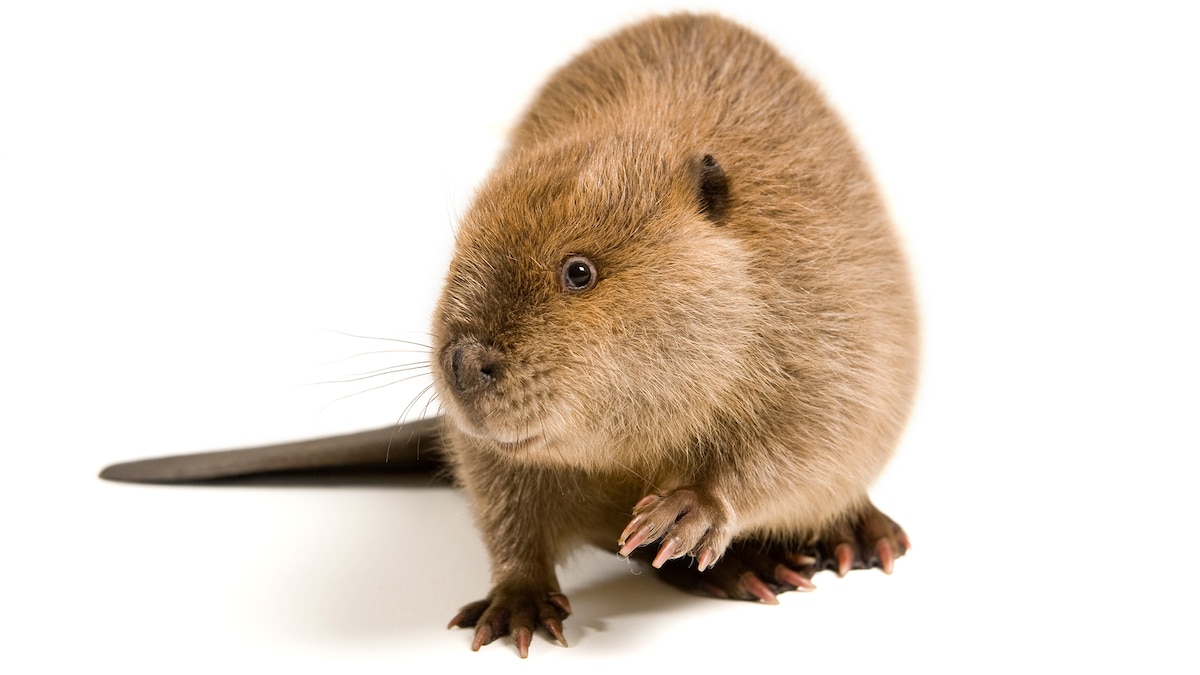Now Reading: 6 Las Vegas Day Trips You Have to Experience
-
01
6 Las Vegas Day Trips You Have to Experience
6 Las Vegas Day Trips You Have to Experience

Some of Las Vegas’s most fascinating attractions lie just outside the city center. Within a few hours’ drive of the home of some of the world’s best entertainment, travelers will find historic landmarks, unique communities and dramatic natural wonders.
National Geographic photographer Keith Ladzinski has built a career out of finding the best adventures around the world. But on his most recent road trip through some of Nevada’s lesser-known regions, the abundance of adventures surprised him.
When it comes to outdoor recreation, it is an absolute all-star state.
Keith Ladzinski, National Geographic Photographer
Between rock climbing in Arrow Canyon, exploring long-abandoned ghost towns, and stargazing under stunning night skies, Ladzinski discovered the joy that comes from discovering places that might only whisper for your attention.
These routes, all a short drive from Las Vegas, will inspire you to step off the Strip and into a new adventure.
Hike Arrow Canyon and Camp in Valley of Fire State Park
Distance from Vegas: 1.5 hours
“You have these beautiful, giant, red sandstone formations,” explains Ladzinski of the Valley of Fire State Park’s appeal. “It’s a really great recreational place for people that want to go do overnights or multiple overnights and then have day trips into the sandstone canyons.”


Rugged red sandstone arches, towers, and waves stretch across Nevada’s Valley of Fire, where 150-million-year-old formations create a stunning landscape of vibrant color contrasted against the surrounding desert terrain.
If time is short, aim to visit at sunrise or sunset when the iron oxide in the rock shines vibrant in the light, making it feel like the desert is ablaze.
“It’s like you’ve taken a saturation bar and cranked it to 10,” says Ladzinski. “It is a wild, wild place to see.”
For a bigger adventure, take the hour-long drive (a 4×4 will help) to Arrow Canyon. The four-mile-long slot canyon, set among 300-foot-tall limestone formations, greets visitors with a “Welcome to your wilderness” sign at the gate.


Arrow Canyon offers an off-the-beaten-path Nevada adventure where visitors can explore narrow slot canyons, test their skills on rock climbing routes, and discover ancient pictographs.
“It’s this unbelievable place where you get to feel small, which is such a unique, cool thing in life,” says Ladzinski. Below the canyon’s towering cliffs, centuries-old petroglyphs mark parts of the winding, pedestrian trail. At the mouth of the canyon, look up and you may spot talented rock climbers quietly traversing the craggy walls.
Ladzinski suggests you keep your camera handy while exploring the canyon. “It has this really interesting color balance,” he says. “I’ve gone to this place many, many times and find it to be truly unique.”
Ride through Red Rock Canyon National Conservation Area
Distance from Vegas: 30 minutes
Nevada’s first national conservation area is an outdoor adventure wonderland. Start at the Red Rocks Visitor Center, where you’ll find tips on how to make the most of your time here and get a sneak peek at flora and fauna that call the Mojave Desert home. Drivers and road bikers can take the 13-mile, one-way scenic drive, which offers breathtaking views of the unique landscapes (you’ll need a timed reservation between October and May) and a variety of picnic areas and trailheads. Mountain bikers have their own rugged designated trails which are equal parts exhilarating and beautiful.

Red Rock Canyon offers a natural playground for mountain bikers, with trails ranging from beginner-friendly loops to challenging technical sections.

“It’s just a spider web network of trails,” says Ladzinski. “I think we did seven or eight miles in like an hour and a half, and we didn’t even scratch the surface.”
For a ride of a different sort, book an experience with Cowboy Trail Rides to enjoy guided tours of the canyon by mule or horse. All are welcome no matter their experience in the saddle. Guests may also hike alongside the pack while watching weathered hands continue Nevada’s long history of cowboy culture.


Horseback riding in Calico Basin provides visitors access to diverse desert terrain with panoramic views of Red Rock Canyon’s unique landscape.
“It just was one of those romantic Western scenes,” Ladzinski says of his time there. “I got some great shots and cool moments. They are the real deal.”
Winter Wonders in the Spring Mountains National Recreation Area
Distance from Las Vegas: 60 minutes.
The Mt. Charleston Scenic Byway sets the scene as you ascend into the majestic Spring Mountains. “You have to go up this giant switchback to Mt. Charleston, and the whole time you’re driving up, you’re just looking at the desert beneath you. It’s really cool,” recalls Ladzinski.


Just an hour from Las Vegas, Lee Canyon Resort offers a surprising winter escape with snowy slopes that transform into mountain biking trails each summer.
At the nearby Lee Canyon ski resort, travelers will find unexpected snowy adventures with a stunning backdrop. Skiing, snowboarding and more await, along with everything you need from boot rentals to day passes. And novice skiers needn’t fear: The terrain accommodates all skill levels. The resort even offers two ski lodges, perfect for apres-ski.
Explore on the edge of Death Valley National Park
Distance to Las Vegas: 3 hours
“You can’t have a bad time in Death Valley,” says Ladzinski. “I feel like December to February is the sweet spot. You’re not going to overheat, and it’s probably quieter, too.”
Make your way to the 600-foot-deep Ubehebe Crater – the biggest of the area’s craters, which were created by volcanic explosions 2,100 years ago. The journey is an otherworldly experience. Drive to the rim, park and hike. Or follow one of the marked trails to one of the smaller craters nearby.


Straddling the Nevada-California border, Death Valley National Park’s landscape of salt flats, sand dunes, and colorful badlands offers a captivating day trip from Las Vegas, where travelers can experience the stunning extremes of the lowest, hottest, and driest national park in the United States.
“It was all about witnessing this cracked landscape,” says Ladzinski, who found unique perches to capture the space. “You’re in this high vantage point with mountains to one side and the valley on the other side. You’re seeing the rolling clouds as they move across the landscape below you, and then in another direction, you’re seeing the mountains rise back up. And there’s a lot of texture and color, just from the erosion. It’s a beautiful vista.”
Death Valley, the nation’s hottest, driest and lowest national park, is an obvious draw for tourists. Fortunately, the Nevada border town of Beatty offers road trippers comfortable lodging and plenty of dining options. There, local artisans have transformed the former Exchange Club into a wonder that demands a longer look.


The quirky frontier town of Beatty, Nevada sits on the eastern edge of Death Valley National Park, offering visitors historic charm, mining heritage, and a convenient gateway to America’s hottest, driest national park.
“Talk about a place you could get lost in,” says Ladzinski. Among the buildings likely to capture your attention are a soon-to-open steampunk casino and motel—The Exchange Club—whose exterior is covered with intricate metal work ranging from open-mouth fish to intricate collections of gears.
“Outside is just the most intricate, wild metal work you’ve ever seen,” says Ladzinski, who had the chance to chat with artist James Henninger.
“He spoke so vehemently around the fact that this gave him purpose…and now he gets to go in there every day and just create and be the artist he is. Whether you appreciate sculpted metal art or not, you can’t help but be drawn in by the detail.”

Belgian artist Albert Szukalski’s “The Last Supper” at the Goldwell Open Air Museum features ghostly shrouded figures arranged in the famous biblical scene, standing silently against Nevada’s desert landscape.
A few miles outside Beatty, the Goldwell Open Air Museum offers more larger-than-life art. The 40-year-old museum’s permanent collection includes “Lady Desert: The Venus of Nevada” – a Lego-like construction that, when the sun hits just right, is strikingly silhouetted against the mountains. Another, “The Last Supper” depicts the iconic artwork with a twist: No people, only the garments they would’ve worn draped to create the scene.


Longtime Beatty resident David Spicer transformed his 120-acre working ranch into southwestern Nevada’s largest mountain biking network, converting trails originally formed by wild burros into 20 miles of rolling singletrack featuring century-old mining relics, lush meadows, and spectacular Mojave Desert views.
When you’re ready to stretch your legs, Spicer Ranch, a 120-acre private working ranch, is only 20 minutes away. Open to the general public for hiking, camping, and mountain biking, this desertscape offers visitors the chance to spot the area’s famous wild burro herds while exploring one of Nevada’s largest trail networks. And every year, about a thousand people descend on the property for SNRG (Southern Nevada Regional Gathering), a Burning Man event complete with gigantic art installations.
Explore the Quirk and Charm of Goldfield
Time to Vegas: 3 hours
If your road-tripping heart desires whimsy, head for Nevada’s historic mining towns. Goldfield, once Nevada’s largest and richest city with a population of 20,000 people, now has a population of about 250 residents living amongst the original 20th-century-era buildings.


Historic buildings line the dusty main street of Goldfield, Nevada, a once-booming gold rush town that flourished in the early 1900s and now stands as a living ghost town where abandoned mining structures and weathered architecture tell the story of America’s last great gold rush.
You see a little bit more of the fabric of the state in a very sort of wild Western way.
Keith Ladzinski, National Geographic Photographer
At the Goldfield Historic Cemetery, you’ll find quirky tombstone epitaphs (“Unknown Man died eating Library Paste, July 14, 1908”). At Rocket Bob’s Art Cars, banal automobiles are transformed into eccentric art. And at the International Car Forest of the Last Church (the largest collection of its kind in the country), more than 40 eccentrically arranged cars serve as a canvas for artists from around the globe—resulting in an alien-invasion-meets-surreal-forest feel. Preserved spaces like Goldfield Historic High School – a 12-room schoolhouse built in 1907– offer history with a few ghosts to boot. (The Mizpah Hotel and the Clown Motel in nearby Tonopah are other popular spots for haunted sightings.)



Between Goldfield and Tonopah, Nevada, visitors can explore offbeat attractions like the International Car Forest, where old vehicles stand buried nose-first in the desert, and the quirky Clown Motel filled with hundreds of clown figurines for those daring enough to spend the night.
“It’s just cool that those places exist,” Ladzinski says with a grin. “You can go within a few hours of Las Vegas, broaden your mind ,and see some things you’d be hard pressed to see in other places.”
Stargazing
Distance from Las Vegas: Within 30 minutes

The Milky Way stretches across the night sky above Rhyolite Ghost Town, where abandoned century-old buildings stand as silent reminders of Nevada’s mining past against some of the state’s darkest skies.
Away from the neon lights of Las Vegas, a canvas of stars opens up. Ladzinski spent evenings admiring Jupiter and peeking at the Milky Way (a major win considering the galaxy is typically harder to see in the winter months). Ladzinski recalls how the starlight accentuated the beauty of the surroundings, illuminating desert stones, towering mountains, Joshua trees, turpentine broom, and Mojave sage. The night sky gave him plenty of opportunities to capture stunning photos—particularly near the ghost town of Rhyolite and the snow-dusted peaks of Mt. Charleston.

Just two hours from the neon glow of Las Vegas, Death Valley National Park offers visitors exceptional stargazing conditions, where its Dark Sky designation and remote location reveal thousands of stars and the sweeping arc of the Milky Way impossible to see from the city.
And long before the first stars appeared on the inky black canvas, Ladzinski recalls, the sky had plenty to offer.
“We had this forever twilight,” he says. “In the desert, there’s dust that’s been pulled into the atmosphere. So, you get these long, elongated orange skies.”
Ladzinski’s road trip reminded him of the benefits of traveling with a slower pace and the charms of quiet towns. And that while the bright lights of Las Vegas have much to offer, there are beautiful places and remarkable experiences to be had in breathtaking natural surroundings that stretch far beyond the city limits.























